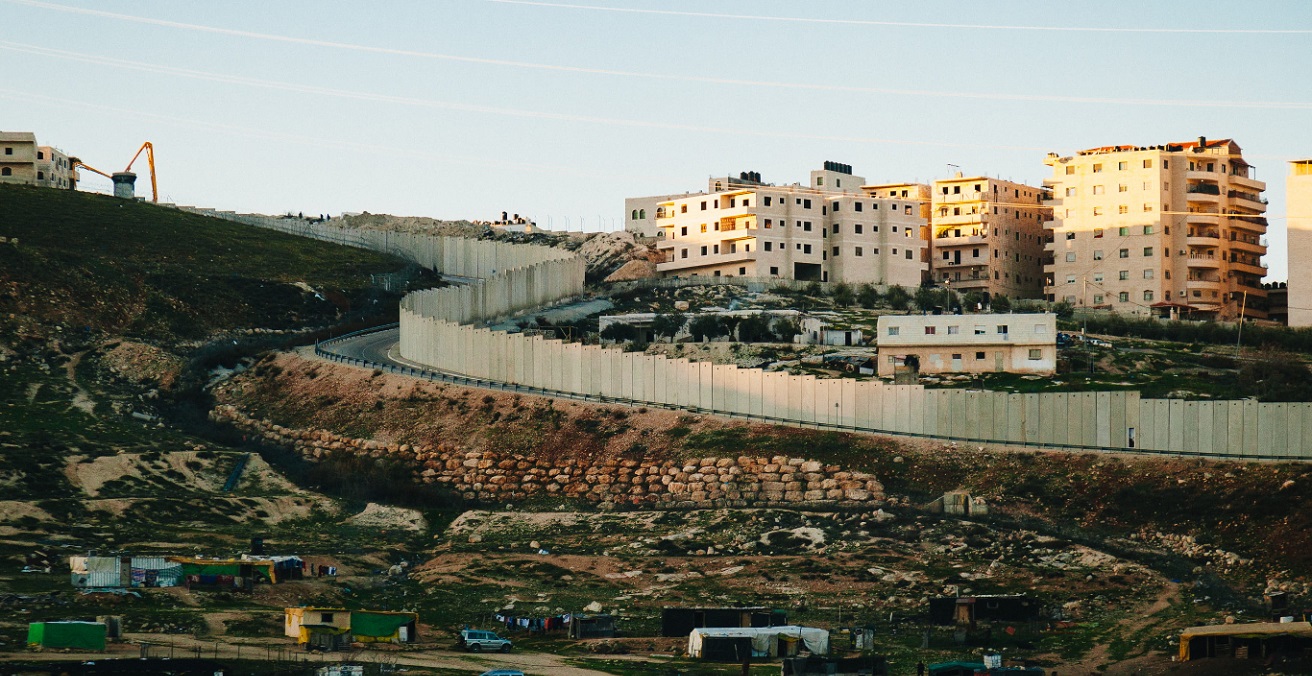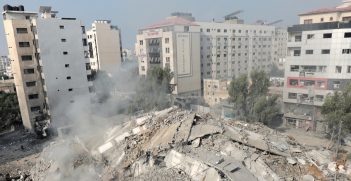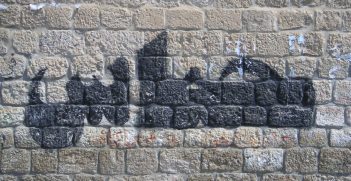Palestine’s Ongoing Nakba

Australians know all too well that seminal historical events for settler colonies are inevitably fraught affairs as the genesis of a new colony invariably comes at huge cost to the pre-existing population. The 1947-48 war in the Holy Land is another such occurrence.
On 14 May 1948, Israeli Jewish leaders unilaterally declared the independence of the State of Israel, marking the improbable success of the Zionist settler movement and redemption for the Jewish people in the wake of the Holocaust. The anniversary of this day, as it falls on the Hebrew calendar, is now celebrated in Israel as Independence Day. Conversely, 15 May is the 72nd anniversary of the Nakba (Catastrophe) in Palestine. It is a day of mourning, commemorating the loss of their homeland after Zionist and Israeli armed forces expelled over 700,000 Palestinians to establish the contours of the self-defined Jewish state in 1948, seizing 78 percent of the land known since antiquity as Palestine. Over 400 Palestinian villages were destroyed in the process; their names literally wiped off the map. It is thus tragically ironic that a long-persecuted, stateless people realised self-determination by driving another people from their homeland and, even now, continue to deny them the possibility of a state of their own.
In 1948, United Nations General Assembly Resolution 194, among other things, resolved that “refugees wishing to return to their homes and live at peace with their neighbours should be permitted to do so at the earliest practicable date, and that compensation should be paid for the property of those choosing not to return and for loss of or damage to property which, under principles of international law or equity, should be made good by the Governments or authorities responsible.” Today, there are five million Palestinian refugees registered with the United Nations. Israel maintains that Palestinian refugees will never be allowed to return and has denied responsibility for their dispossession.
The creation of Israel in 1948 cannot be understood separately from the century-long Zionist settler colonial project in Palestine aimed at creating a specifically Jewish ethno-nationalist state. As such, it was a necessary precondition to ethnically cleanse large numbers of non-Jews from the territories that now constitute Israel to ensure an overwhelming Jewish majority. After all, settler colonialism is not an event; it is a structure, which manifests in cycles of violence, displacement, and dispossession of the native local population. Israel’s settler colonial structure is maintained by a continued drive to dominate and – at times – eliminate the native population of Palestine. For Palestinians, the Nakba is a historical starting point for still ongoing experiences of occupation and exile.
June will mark 53 years of Israeli occupation of Palestinian East Jerusalem, the West Bank, and the Gaza Strip. During the 1967 Six Day War, Israeli forces captured the remaining 22 percent of British Mandate Palestine, bringing an additional one million Palestinians under Israeli control and establishing the two-tiered system of military rule over occupied Palestinians and civil rule for Israelis that endures to this day.
In 1967, United Nations Security Council Resolution 242, however, stipulated “the inadmissibility of the acquisition of territory by war” and demanded Israeli forces withdraw from the territories occupied during the conflict. Resolution 242 has long since formed the basis of widespread international consensus regarding the need for a two-state solution – one Israeli, one Palestinian – to end the conflict. This consensus vis-à-vis the need for a two state solution and the illegality of Israel’s colonial enterprise in the Occupied Palestinian Territories was most recently affirmed by United Nations Security Council Resolution 2334 in December 2016, fourteen votes to zero, with the United States abstaining.
Since 1967, no state has recognised the legitimacy of Israeli control over the Occupied Palestinian Territories or East Jerusalem– that is, until now, with the Trump administration moving the US embassy to Jerusalem and appearing to give the green light for the annexation of Israeli settlements, the self-defined jurisdictions which account for 30 percent of the West Bank heartlands.
After three inconclusive elections in less than a year, Israeli political leaders recently formed a unity government that is limited to passing legislation to combat the COVID-19 crisis during its first six months. The exception to this rule is the annexation of parts of the West Bank, with the government indicating it will draft legislation to initiate the process from 1 July. Trump’s “peace plan” released earlier in 2020 made annexation contingent, at least rhetorically, on the establishment of a Palestinian entity which is “less than a state” as well as approval by the White House. This new Palestinian entity would be lacking in key aspects of sovereignty: it would inter alia be demilitarised, for instance, and not even able to control its own borders. While the White House is set to approve annexation, the creation of a Palestinian state seems farther away than ever and, as such, so is an end to the Israeli-Palestinian conflict.
Trump’s plan for peace is built upon a vision that legitimises the Israeli settler colonial project in Palestine. It considers that past mediation efforts were destined for failure because they neglected Israeli expansionist realities. These include Israel’s unilateral annexation of East Jerusalem in 1980 and continuing expansion of settlements in the West Bank. In fact, since 1967, Israel has transferred more than 600,000 Jewish citizens to inhabit Jewish exclusive zones in the West Bank and East Jerusalem, contravening Article 49 of the Fourth Geneva Convention, which prohibits an occupying power from transferring its civilians into the territory it occupies. The Trump plan, then, cannot be viewed in isolation from the century-long settler colonial project in Palestine.
Trump’s plan dismisses the role of international institutions and norms and further claims that international resolutions “have enabled political leaders to avoid addressing the complexities of this conflict rather than enabling a realistic path to peace.” It is clear, then, that the authors of the plan meant to situate their efforts outside of existing parameters of international institutions and consensus. Instead, the plan is envisioned to present an alternative, which largely caters to Israeli demands and bypasses Palestinian historical rights. In essence, the plan assumes that Palestinians can be materially bribed into forfeiting the national rights for which they have long fought and died. Trump’s plan, therefore, is another chapter in the Nakba of Palestinians.
Like it or not, Trump’s plan will become the new baseline for future negotiations: the concessions will have already been made and it would take the expenditure of an enormous amount of political capital should a future US president be inclined to walk them back. Moreover, the plan establishes yet another precedent for other powers to justify violating international law, especially considering the US has often touted itself as the upholder of an international rules-based order that it is now set to dramatically undermine.
In the meantime, the Nakba continues to decimate Palestinian society at home and in exile. Palestinian refugee communities are among the most vulnerable in the region. The Yarmouk Palestinian refugee camp in Syria was subjugated to terror, siege, and repeated displacement. Gaza’s refugees, who constitute 74 percent of the total population of the territory, have resided under a crippling siege and repeated assaults by Israel for more than a decade, which have killed thousands. Lebanon’s 180,000 Palestinian refugees suffer from systematic discrimination, isolation, and violence. Palestinians in the West Bank and East Jerusalem are subject to other forms of Nakba. Settler violence, housing demolitions, daily humiliations, economic subjugation, and hundreds of walls, checkpoints, and roadblocks constitute daily life for three million Palestinians. For Palestinians, the Nakba is never ending and part of everyday life over 72 years later.
Dr Tristan Dunning is an honorary research fellow at the University of Queensland. He is the author of Hamas, Jihad and Popular Legitimacy: Reinterpreting Resistance in Palestine (2016) and the editor of Palestine: Past and Present (2019). Follow him on Twitter: @trisdunning
Dr Anas Iqtait is a lecturer at the Australian National University. He has previously worked in Palestinian issues with the United Nations Office for the Coordination of Humanitarian Affairs, Oxfam, and the Korea International Cooperation Agency. Follow him on Twitter: @Iqtait88
This article is published under a Creative Commons Licence and may be republished with attribution.





